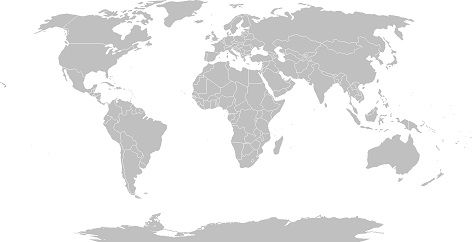In July 2014, Chinese news outlet Xinhua reported that China successfully completed an anti-ballistic missile (ABM) test. This test was swiftly met by American accusations that the 2014 test, as well as previous ABM tests in 2010 and 2013, served another purpose: the development of China’s anti-satellite (ASAT) capabilities. While it is extremely difficult to differentiate between an ABM test and an ASAT test, these tests seemingly confirm that China’s interest in developing ASAT capabilities has grown in recent years.
In 2007, China destroyed an obsolete weather satellite in orbit using a ground-based missile in a widely condemned ASAT test. In response, the United States conducted an ASAT test of itsown, successfully shooting down a spy satellite in low Earth orbit with a ship-launched ASAT missile. Both tests only briefly attracted international attention, but the military importance of satellites and their vulnerabilities is often under-analyzed and worth exploring.

Satellites provide militaries with everything from precise navigation data for nuclear missiles and aircraft, to secure communications between units, to the latest information on the location and composition of potential threats. As satellites have become cheaper, smaller, and more capable, the world’s militaries have grown more dependent on them. The American military, with its advanced weapons systems and far-flung bases, is perhaps the most dependent.
In 2011 the American Intelligence Community and the Pentagon jointly released the National Security Space Strategy (NSSS), in which they deem space systems (i.e. satellites) as vital to American national security and its ability to project power around the world. But the NSSS points out that other countries have been able to study the United States’space systems and are now able to exploit vulnerabilities in the event of conflict.
Despite being an important facet of military infrastructure, satellites are extremely vulnerable for several reasons. One is their orbital path; their distance from Earth, direction, and speed remain relatively constant over a long period of time, allowing them to be easily tracked. Another is a lack of defensive countermeasures. Due to high launch costs, satellites often lack defensive armaments like jammers or extra thrusters and fuel for maneuvering.
While satellite manufacturers are attempting to remedy these vulnerabilities, they face two types of ASAT weapons systems: destructive and non-destructive. Destructive ASAT weapons systems involve systems that physically destroy the satellite, like missiles with explosive warheads or kinetic kill vehicles (which destroy the target by colliding with it in orbit). Non-destructive ASAT weapons systems interfere with or damage the sensitive instruments that the satellite uses to conduct its mission or communicate with its base. The main types of non-destructive ASAT weapons systems include jammers, hackers, and ground-based lasers (which are used to “dazzle”or temporarily blind satellites). Given how reliant militaries have become on satellites, the ability to destroy or render enemy satellites ineffective is an increasingly important advantage in potential conflicts. ASAT capabilities have become a critical aspect of anti-access/area-denial strategies that are becoming standard doctrine when dealing with more capable foes. China in particular sees the development of ASAT weapons systems as a way of denying control of the sea and air battle space to the enemy in a conflict. For example, by destroying American GPS satellites over the Pacific Ocean, China could render the US’most important means of force projection in East Asia, aircraft carrier battle groups, effectively inert as American aircraft would no longer have the navigational data needed to conduct precise airstrikes against Chinese targets.

ASAT weapons systems, despite their utility, have potentially catastrophic consequences if used improperly. Since even small bits of debris can cripple a satellite or leave a part of the International Space Station (ISS) uninhabitable, anything that creates this debris is a potential hazard. Destructive ASAT weapons can be particularly devastating to the infrastructure that currently exists in space; destroying a satellite can create thousands of pieces of space debris. China’s 2007 test created approximately 3,000 pieces of trackable space debris (the most ever observed from a single event) that threatened hundreds of satellites (and even passed within a few kilometres of the ISS, extremely close by space standards). Furthermore, many satellites have both military and civilian uses; their destruction in a conflict could have severe side effects for civilian populations and their economies.
As satellite technology has matured, many militaries have come to rely on space systems for everything from navigation to communication, making the development of ASAT weapons that can neutralize these systems ever more important. These weapons, however, pose a serious threat to the hundreds of military and civilian satellites that orbit the Earth. If steps are not taken to regulate the development and testing of ASAT weapons systems, the global commons of space could be in jeopardy.



